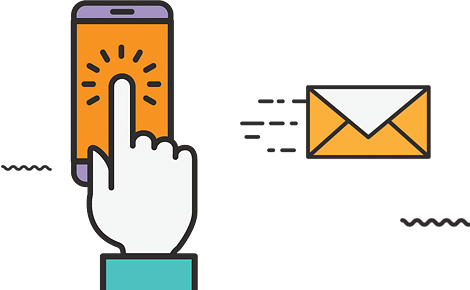
Beginning an online business can amount to a gargantuan task & Donot Know about How to Sell on Shopify ; with surely such challenges as finding the right products, understanding the competition, and choosing the right ecommerce platform awaiting the entrepreneur. Digi Dervish steps in to help students and aspiring entrepreneurs overcome these hurdles through online courses, store customization, and digital marketing services, including Google Ads and Facebook Ads. This guide will provide five easy ways to help you boost your sales on Shopify while addressing some challenges commonly encountered by new sellers.
Common Problems Faced When Selling on Shopify
Discussions held between the speaker and listener for understanding the presented material fall under the semantics of dialogue, hereby fundamentally assisting the informing party to involve in understanding and solving the issues necessitating dialogue as well.
How to Make a Website & How to Sell on Shopify
The majority of beginners falter at making an eye-catchy, user-friendly Shopify store since they have no experience and knowledge in the field of technology and designing. It is important to create a good website that maintains easy navigation, high-quality images, and checkout to the best user experience. It matters to have the right themes, optimize for mobile users, and load fast. A good way to make it easier for beginners is using tools and apps given by Shopify. Web Designing Services

Finding Products in High Demand
For new online sellers, identifying trending and profitable products remains a daunting task. Conducting comprehensive market research with tools like Google Trends or TikTok insights and eCommerce platforms will be vital in winning product identification. It is worthwhile to consider demand consistency, competition level, and supplier availability. By validating products through small batch testing or pre-ordering, one can minimize risks and maximize profits.
Social Media Marketing
Competitive Research
In order to position your store effectively and gain an advantage, it is important to understand competition within the market. To achieve this, analyze competitor pricing strategies and marketing schemes and read customer reviews. SEMrush, Ahrefs, and the Facebook Ad Library will help track industry trends and look for market gaps. Differentiate your brand with unique value propositions, and stand a better chance of attracting customers and generating brand loyalty.
SEO Services
Starting an Online Business on the Side of a Day Job
When you begin an online business side by side with a full-time job, managing all efficiently seems tough. Prioritizing tasks, automating tasks along with goal setting become some of the tools to ensure productivity. Dropshipping or using a print-on-demand model alleviates inventory management from your to-do list. Staying consistent and scaling gradually are critical factors in making a successful transition from a side hustle to a full-time business.

Building a Strong Business Plan
The development of a company would, without a true roadmap, become slow and inefficient. Normally, a good business plan would outline what the business owner desires, such as the objectives, target market, and marketing and financial projections. It somewhat keeps the entrepreneur in focus about what he or she wants to do, mobilizes resources, and allows the entrepreneur to adapt to changes in the marketplace. Periodic reviews keep the business plan updated and help keep the business focused and competitive.
Defining Customer Persona and Buyer Persona
It is also important to define target customers and buyer personas for successful marketing efforts aimed at a good audience. A customer persona would typically include demographics, interests, and pain points, while a buyer persona comes into play when more detailed information is collected حول تسريحات ‘ شراء ومراحل اتخاذ القرار. Estimations can be realized through surveys, customer data analysis, or tracking engagement. The better you know your ideal customers, the more effective ads, content, and products you are likely to create.
Understanding the Business Model
The cost-benefit analysis of the business model, such as whether the model is chosen between dropshipping, private labelling, or print-on-demand business models, determines profit margins and success over time. Each model has pros and cons, such as investments, fulfillment types, and scalability potential. The most common examples are dropshipping-low risk but with lower profit margins, or private labelling that brings brand ownership but needs upfront money. Assessment of which of the business models suit the business objective and resource will ensure sustained growth-from investment to returns.

Maximizing Profit Margin
Many sellers face the challenge of pricing products competitively and still earning a profit. Reducing costs, negotiating improved supplier prices, and streamlining pricing strategies would improve profit margins. Upselling, cross-selling, or bundling will help improve the average order value. Organic marketing, through SEO and social media, would help in cutting down advertisement expenditure while providing consistent sales.
Now, we present five easy ways to skyrocket sales on Shopify and how Digi Dervish can come into play.
1. Choose the Right Shopify Plan and Compare Ecommerce Platforms
Choosing the perfect Shopify plan is vital to reaching the maximum sales potential. There are plenty of plans on offer, including the Shopify Starter Plan, which is the ideal entry point for startups wishing to begin selling through social media without the need for a full blown website.
But some would-be entrepreneurs may ask how this service differs from other ecommerce platforms, such as:
Shopify vs. BigCommerce
Shopify, with its simple interface, is indeed very friendly to new users and small businesses. It has an easy setup, an intuitive dashboard, and a whole choice of third-party apps for extending functionality. Conversely, BigCommerce stands out for giving greater built-in functionality, such as advanced SEO and multi-channel selling, all without additional apps. While BigCommerce works great for large stores needing scalability, Shopify will always be better for simple use.
Shopify vs. Commerce Cloud
Salesforce Commerce Cloud is an enterprise solution suited for large corporations with complex eCommerce needs. The offering comes with strong AI-driven personalization capabilities and connects seamlessly with Salesforce’s CRM, thus being a strong option albeit expensive. On the contrary, Shopify is targeted toward small and medium providers for its price, ease of setup, and plethora of apps supporting the business. Commerce Cloud is for big-budget and resource-rich enterprises, while Shopify is for small-time entrepreneurs and growing companies.
Shopify vs. Lightspeed
Lightspeed is an ideal choice for brick-and-mortar retailers. It boasts solid POS (Point of Sale) solutions integrating well into physical locations. In addition, advanced inventory management and analytics for in-store sales make it a terrific partner for retailers. On the contrary, Shopify is designed with online selling in mind; it offers a seamless eCommerce experience through an all-mighty website builder and unlimited marketing tools. Lightspeed is the best ticket for companies that are strong offline, while Shopify is the best choice for every online-first vendor.
Shopify vs. Magento
Magento is an open source platform that is very good for customization, but it requires advanced skills in coding coupled with the expenditure of large development resources. This type of software is excellent for very big companies that have their own development team and demands complete control to build their own online store. People who prefer hands-on control of their stores can opt for Magento, while Shopify is for others who want a simpler plug-and-play style solution that requires almost zero coding knowledge. Still, of course, Magento offers greater flexibility, while Shopify has all the bells and whistles to make it easy to use as well as providing much help with e-commerce.
Shopify vs. Prestashop
Prestashop is a free, open-source eCommerce platform with customization options but requires technical expertise to set up and maintain. Shopify, on the other hand, is a more scalable solution that comes with quality customer support and thousands of apps and themes. In terms of security and performance, Shopify’s hosted infrastructure has the upper hand. On the other hand, Prestashop would require manual hosting and maintenance. When it comes to reliability, easy to use, and scalability, Shopify is the better option.
Shopify vs. Squarespace
Squarespace is an excellent platform for content-heavy websites, such as portfolios and blogs, thanks to its sleek templates and strong content management features. However, its eCommerce capabilities are limited compared to Shopify, which is designed specifically for online stores. Shopify provides better tools for inventory management, payment processing, and multi-channel selling, making it the superior choice for eCommerce businesses. While Squarespace is best for creatives and service-based websites, Shopify is the go-to platform for product-based businesses.
Shopify vs. Webflow
Webflow offers advanced design flexibility, allowing users to create highly customized websites with its powerful visual editor. However, its eCommerce features are not as comprehensive as Shopify’s, which offers a more streamlined experience for online selling. Shopify provides built-in tools for inventory management, marketing, and payment processing, making it a more practical choice for eCommerce. While Webflow is great for designers who want full creative control, Shopify is the better option for business owners focused on sales and growth.
Shopify vs. Wix
Wix is a beginner-friendly website builder that is great for small websites, portfolios, and personal blogs. It offers drag-and-drop customization and a variety of templates but lacks the advanced eCommerce features that Shopify provides. Shopify, built specifically for online selling, includes tools for inventory tracking, payment integration, and multi-channel sales. While Wix is ideal for simple websites, Shopify is the superior platform for serious eCommerce businesses looking to scale.
Shopify vs. WooCommerce
WooCommerce is a WordPress plugin that offers complete flexibility and customization but requires more hands-on management, including hosting and security. Shopify, in contrast, is an all-in-one solution that takes care of hosting, security, and maintenance, making it easier to manage. WooCommerce is great for those who prefer full control and have technical knowledge, but Shopify is a more convenient choice for business owners who want a hassle-free eCommerce experience. For those prioritizing ease of use and scalability, Shopify is the better option.
Shopify vs. WordPress
It is, however, a great platform for blogging and letting individuals customize their websites. Its e-commerce functionality mainly depends on plugins such as WooCommerce, which adds complexity because you’d need to set everything up and maintain it by yourself. Compare that with Shopify, which was specifically built for online stores; it comes with everything, including built-in payment processing, inventory management, and marketing tools. In summary, WordPress is great for
entities that want to publish content-heavy websites, but Shopify is the way to go for entities that are purely selling their products online.
Solution with Digi Dervish
Your expert has to be with you being with DigiDervish to help you choose the best Shopify plan among the competing ones; your choice must be a good one.
2. Find High-Demand Products and Conduct Competitive Research
It is that which one sells, which ultimately leads to success. Many new people do not know how to find high demand products or competitive research.
How to Find Winning Products:
- Employ Google Trends, AliExpress, and Amazon Best Sellers tools.
- Monitor social media and influencer suggestions for topics.
- Check out top-selling items from your competitors.
How to Conduct Competitive Research:
- Analyze competition in pricing and customer reviews.
- Examine their marketing methods (ad, social media marketing, SEO).
- Ascertain the loopholes in their offerings, giving a better value opportunity.
👉With Digi-Dervish Solution, you can find the necessary training through online courses as you learn more about analyzing commodities and going head to head with competitors.
3. Optimize Your Store for Higher Conversions
A poorly designed Shopify store inherently drives away potential customers. A lot of beginners struggle with designing a website with an innovative presentable look and conversion of visitors into buyers.
Key Store Optimization Tips:
- Ensure that the presentation is clear and has a mobile-friendly theme.
- Include clear call-to-action (CTA) buttons.
- Put in SEO keywords optimized for product descriptions.
- Enhancing the speed of the page and the checking process would enable.
👉 Solution with Digi Dervish: We build tailor-made online Shopify stores for brands by providing store customization services for their unique high conversion strategies.
4. Leverage Digital Marketing : Google Ads and Facebook Ads
Getting customers through marketing is one of the most important aspects of it, but basic and new sellers do not understand how to use or work with Google Ads and Facebook Ads effectively. Proper strategic planning for advertisement intends to avoid losses occurring in ad spends.
How to Use Paid Ads Effectively:
- Implementing customer personas and buyer personas within your digital ads could increase their effectiveness.
- Retargeting ads bring back those who did not convert.
- A/B testing different ad creatives will determine the best ad for maximum effectiveness.
👉 Solution provided by Dig into Details: Aims to serve through his expert digital marketing capabilities and such catchy advertisements of Google and Facebook that can grab potential customers in one glance!
5. Build a Strong Business Plan and Choose the Right Business Model
After a comprehensive nail-down of the business write-up, your Shopify store demands a model of the business in order to achieve outstanding results.
Popular Shopify Business Models:
- Dropshipping requires no stockholding, has less risk, and therefore earns lower profits.
- Private labeling refers to their products sold under one’s own brand, which do, however, enjoy higher margins.
- Print-on-demand allows for selling products on which designs can be customized.
Creating a Business Plan:
- Go ahead and outline your company’s niche and then this:
- Reflect your USP. Define clear goals financially, as you calculate the operating margin.
- Sketch your growth and marketing strategies.
💡 Answer with Digi Dervish: Our course sets propel students and entrepreneurs into creating solid business plans, and the selection of a suitable model to guarantee an outcome.
Final Thoughts
It doesn’t have to be intimidating selling on Shopify. Choose your plan wisely, know your products in demand, open up your store, market online and have a strong business plan, and you will have the sales skyrocketing!
Get expert advice from Digi Dervish on how to custom-make your store, market it through digital means, and attend online courses, and you will have all the help that you need to set up a successful and profitable online business. Ready to sell on Shopify? Get in touch with us now!



